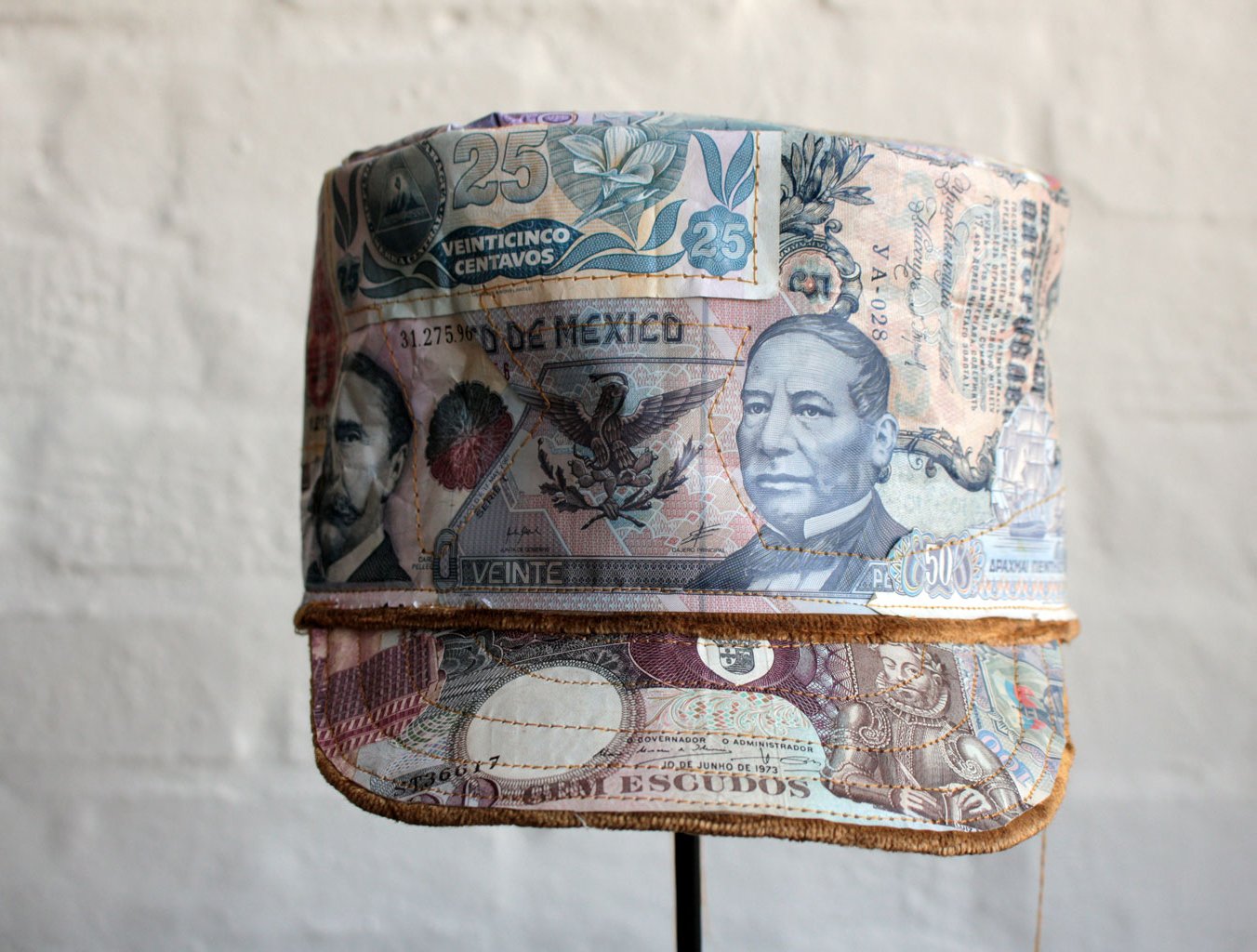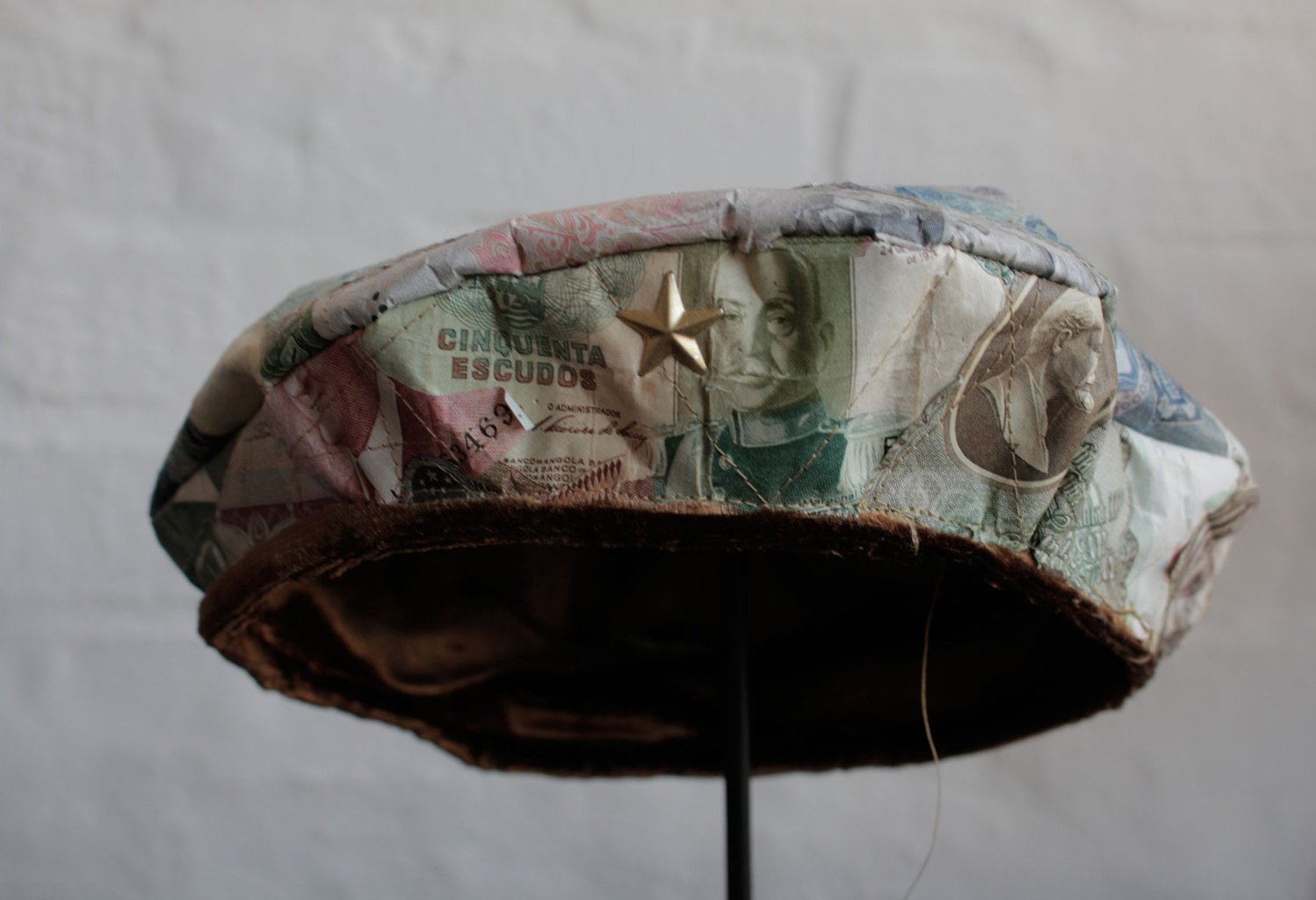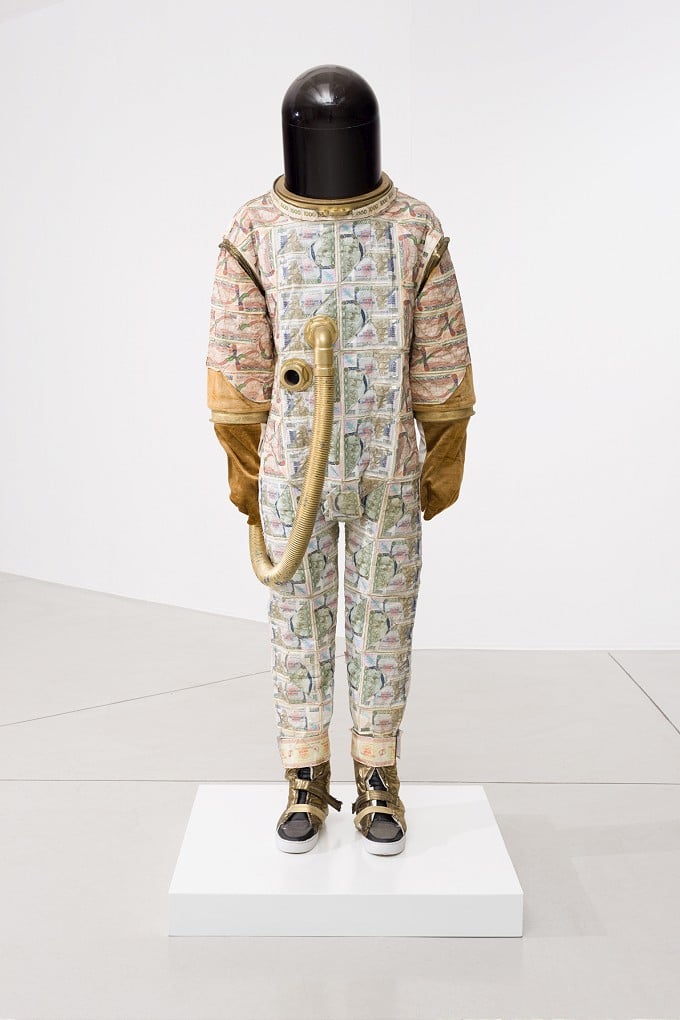Artwork by Gerald Machona.
Artist Gerald Machona’s innovative use of currency as an aesthetic material is one of the most notable aspects of his portfolio of work. Initially, he used the decommissioned dollars from his native country of Zimbabwe to convey the difficulties of the hyperinflationary environment that Zimbabweans were living under in the first decade of the 21st century.
In 2008, when the service delivery protests in South Africa turned xenophobic, the material became a symbolic conduit for him to speak about some of the underlying issues of class, migration and nationalism.

Headdress for The Brother Moves on, inspired by Fidel Castro.
Vabvakure (People from Far Away) is a series of works created by Machona in response to the violent xenophobic attacks that happened at this time. Through these, he explored the notion of foreignness and what it feels like to be a foreigner living in South Africa, and attempted to playfully disrupt the negative misconceptions of African expatriates and immigrants.
In much of his work, Machona references a form of cultural meditation called Nyau, a masked performance that was used by the Chewa people while living as foreigners in Zimbabwe and other Southern African countries.
Placing this in a current context, Machona created characters that perform specific occupations assumed by some African immigrants in South Africa today; a barber, a barman, a cross-border trader. Each performer, wearing a mask made out of old Zimbabwean currency, was titled with the Shona prefix Ndiri meaning “I am”. This ultimately led to the character known as Ndiri Afronaut, whose performances (wearing the space suit meticulously stitched from Zim dollars) were captured and presented as a short film that was central to the exhibition.
“We are all foreign to someone, somewhere at some point in our lifetime and my work tries to connect with that idea,” he says. “With global trends of migration and naturalisation, we are now faced with rapidly diversified notions of collective identity, where traditional concepts such as nationhood are no longer simply about where you are born.”

Headdress for The Brother Moves on inspired by Julius Malema.
Machona has lived in the diaspora for over seven years now, and the majority of that time has been spent in South Africa. That, together with his native land, has influenced the artistic concerns, processes and politics behind his work. ?All things considered, it seems unlikely that Machona, who used creativity as an outlet even as a young child, could have become anything but an artist.
Multi-disciplinary approach
“I can’t really remember an exact moment when I realised I wanted to be an artist,” he says, “it’s something I have always just been. Even when I considered other professions, I found myself engaging in some form of artistry.”
After completing a bachelor of fine art specialising in new media at the University of Cape Town’s Michaelis, Machona received a scholarship from Rhodes University where he completed his master’s degree in fine art with a focus on sculpture in 2013. With sculpture, performance, photography and film all forming part of his artistic practice, Machona employs a multidisciplinary approach in order to have the freedom the utilise the medium that best conveys an idea.

‘Ndiri Afronaut’. (All photographs supplied)
Currently, he is working on a series of four headdresses for a performance by local music and art ensemble The Brother Moves On, each crafted in the likeness of the iconic headgear worn by the Pope, Julius Malema, Mobutu Sese Seko and Fidel Castro.
At this year’s FNB Joburg Art Fair Machona presented a 90cm cube similar to the Rubik’s Cube that took the world by storm in the mid-1970s, only his was made out of money.
This article was adapted from an interview with the artist that appeared on creative showcase site, www.10and5.com.